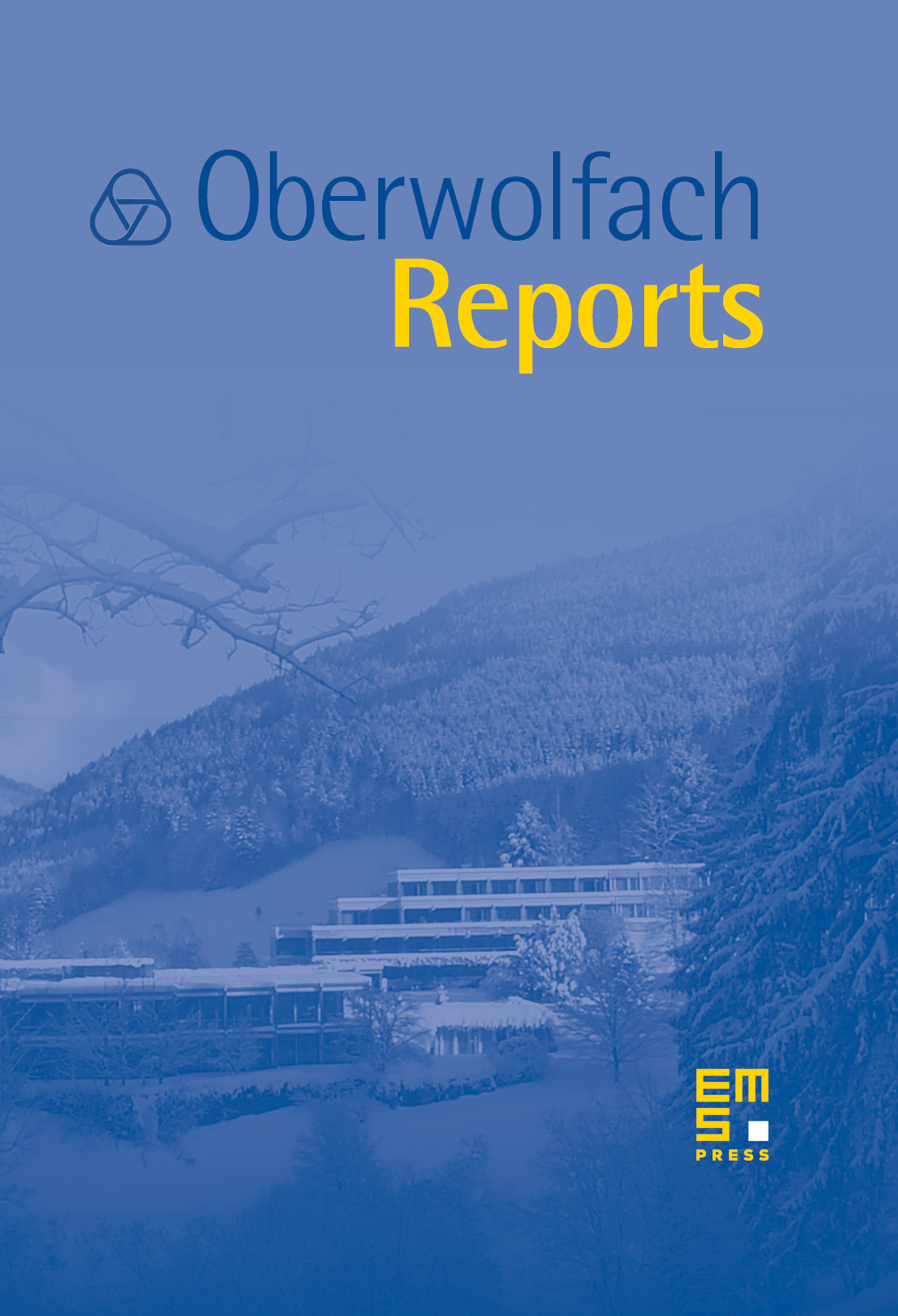Enveloping Algebras and Geometric Representation Theory
Shrawan Kumar
University of North Carolina at Chapel Hill, USAPeter Littelmann
Universität Köln, GermanyWolfgang Soergel
Universität Freiburg, Germany

Abstract
Since its inception in the early seventies, the study of Enveloping Algebras has undergone a significant and continuous evolution and moreover has inspired a wide variety of developments in many areas of mathematics including Ring Theory, Differential Operators, Invariant Theory, Quantum Groups and Hecke Algebras.
As indicated above, one of the main goals behind this meeting was to bring together a group of participants with a wide range of interests in and around the geometric and the combinatorial side of the representation theory of Lie groups and algebras. We strongly believe that such an approach to representation theory, in particular interaction between geometry and representation theory, will open up new avenues of thought and lead to progress in a number of areas.
This diversity was well reflected in the expertize represented by the conference participants, as well as in the wide range of topics covered. They may broadly be summarized under the following three headings:
(1) The study of the structure and representation theory through
a) Slodowy slices and the Joseph ideal, b) Equivalence of categories of representations and certain geometric counterparts, c) Hall algebras, Quotient schemes and canonical bases, d) Richardson elements and birationality questions, e) free Lie algebras and current algebras, f) Dirac cohomology, h) Gelfand-Zeitlin theory
(2) Combinatorial Aspects of Lie Systems particularly through
a) Saturation problems and Buildings, b) Affine and double Affine Hecke algebras, Cherednik algebras, c) Solvable lattice models
(3) Geometric Structures including
a) Representation theoretic methods in enumerative geometry, b) Multiplicity free symplectic reduction, c) Monodromy actions of braid groups, d) Associated varieties for Lie super algebras, e) affine Grassmannians, f) Schubert varieties and Demazure modules
The single most important development reported in this conference seems to us to be the generalization of the categorical Satake isomorphism to quantum groups at roots of unity, which allows to bring in a whole lot of new geometry into representation theory. It seems likely that it will lead to the proofs of some open conjectures of Lusztig. We were particularly happy to have quite a few very strong younger participants and some highly promising postdocs. We tried to accomodate young postdocs, as much as feasible, to present their work by devoting one afternoon to their (shorter) talks.
Cite this article
Shrawan Kumar, Peter Littelmann, Wolfgang Soergel, Enveloping Algebras and Geometric Representation Theory. Oberwolfach Rep. 2 (2005), no. 1, pp. 723–777
DOI 10.4171/OWR/2005/13